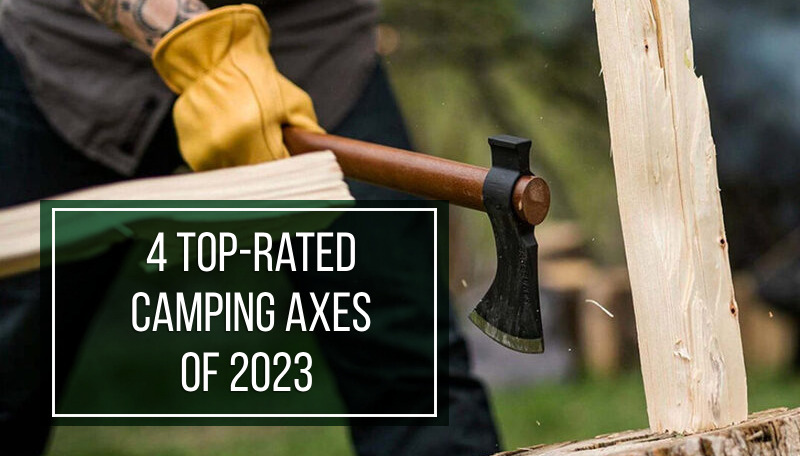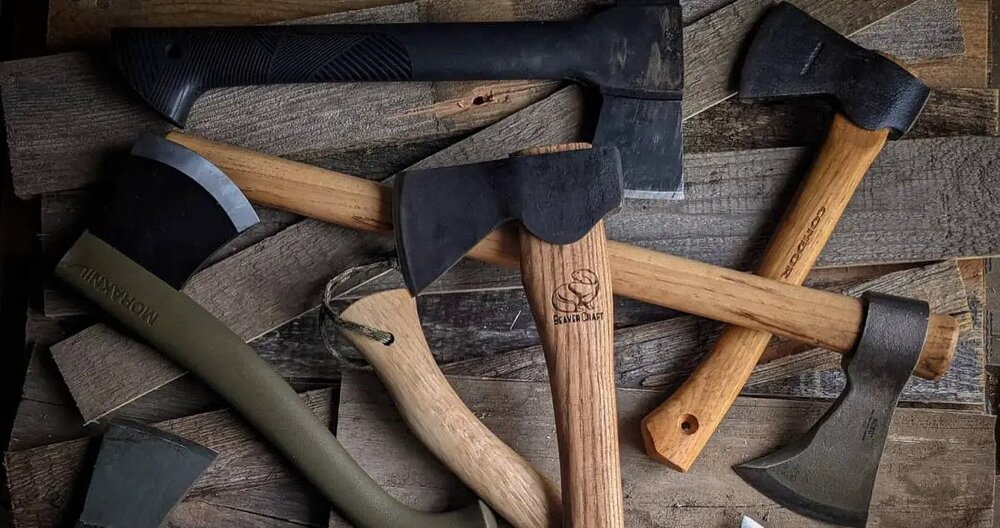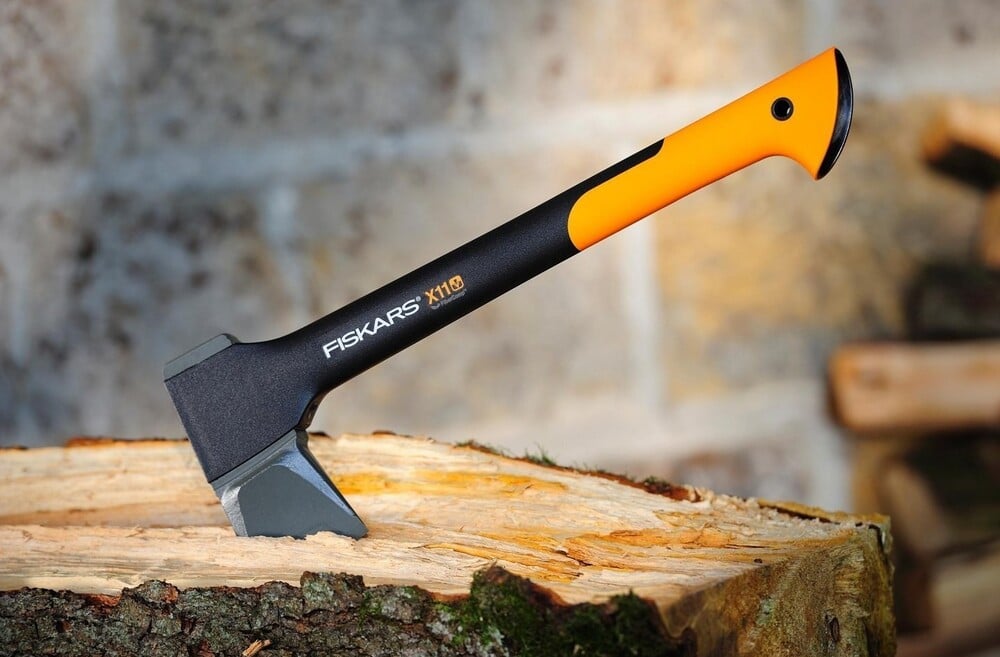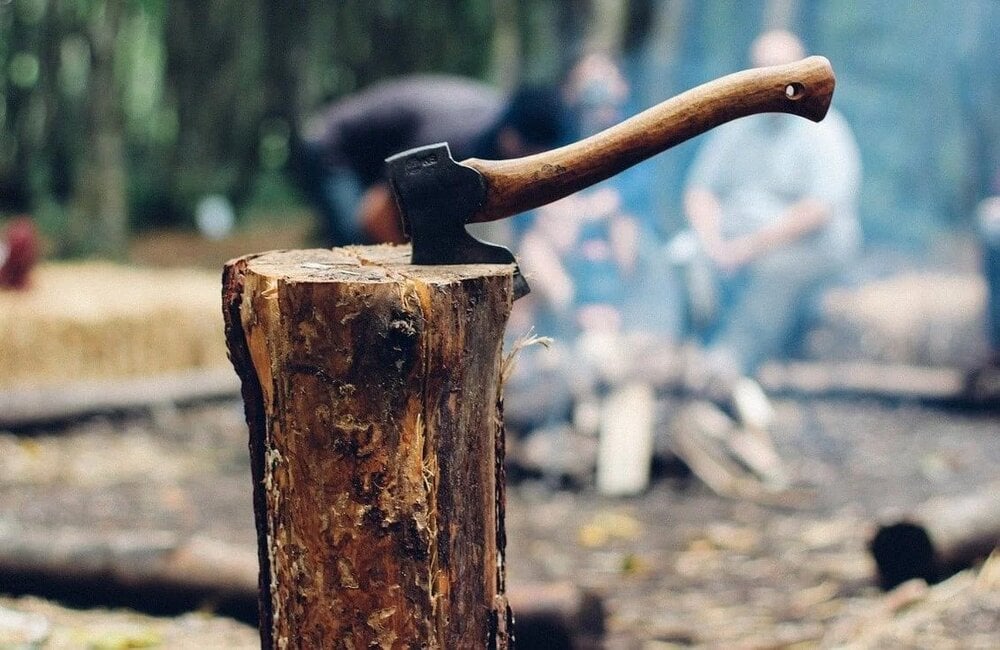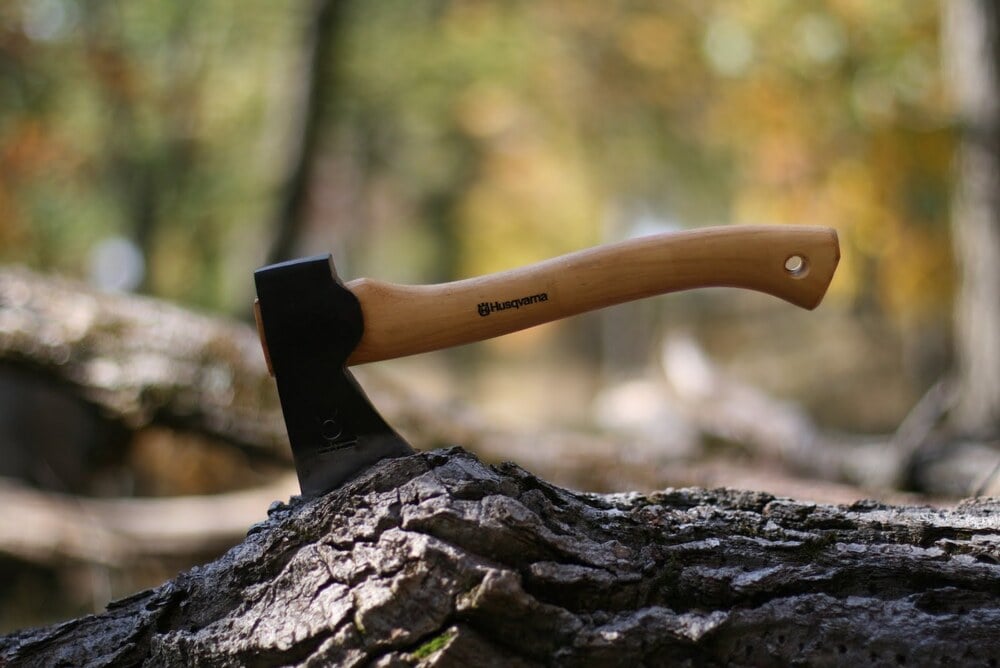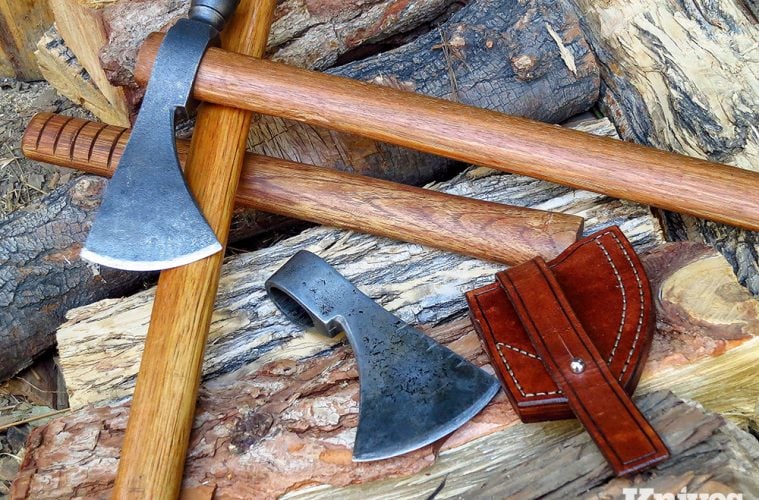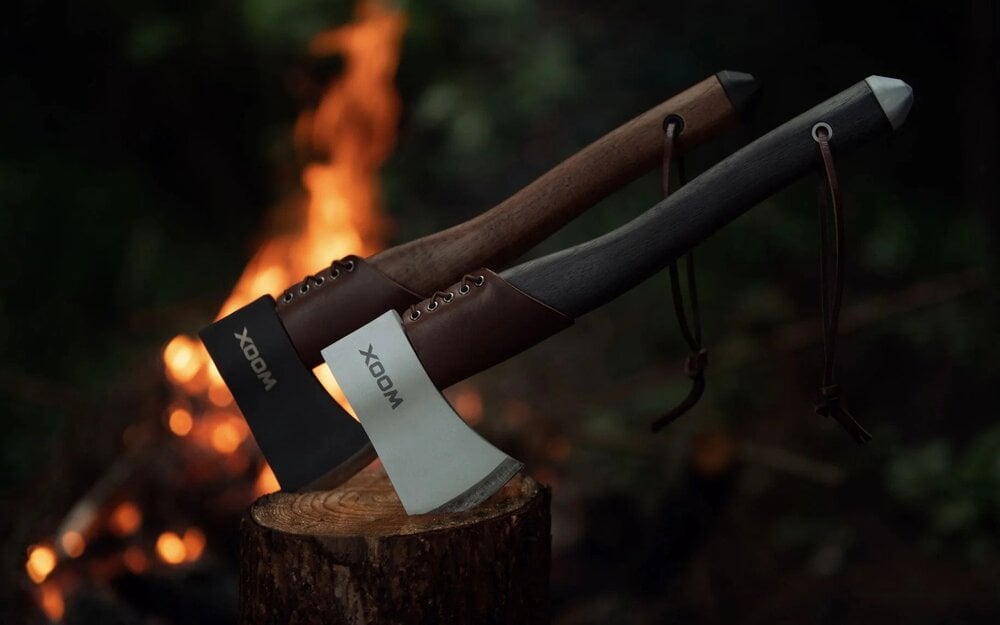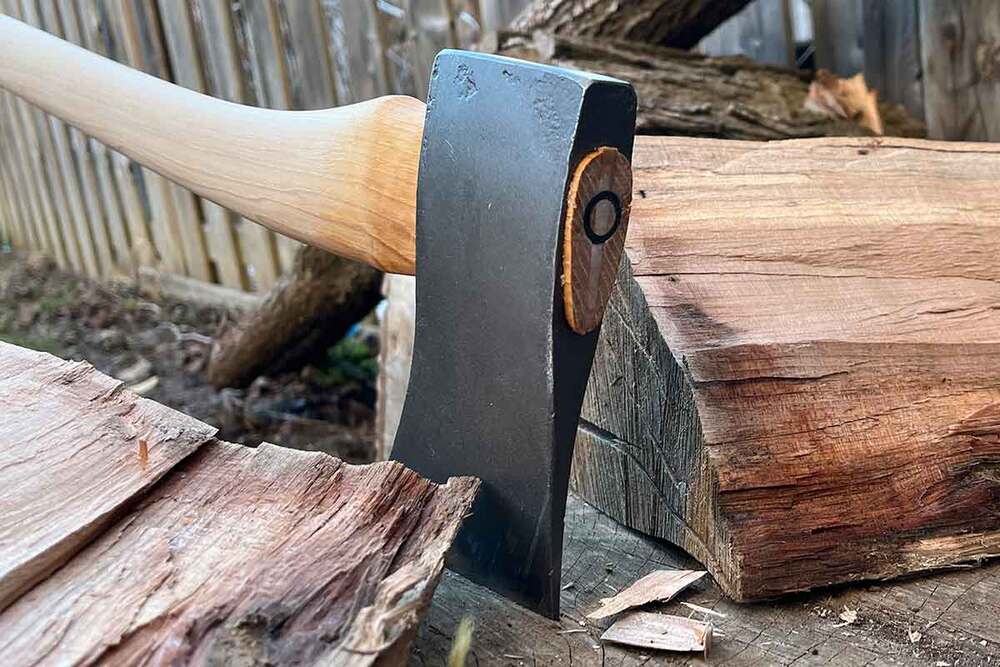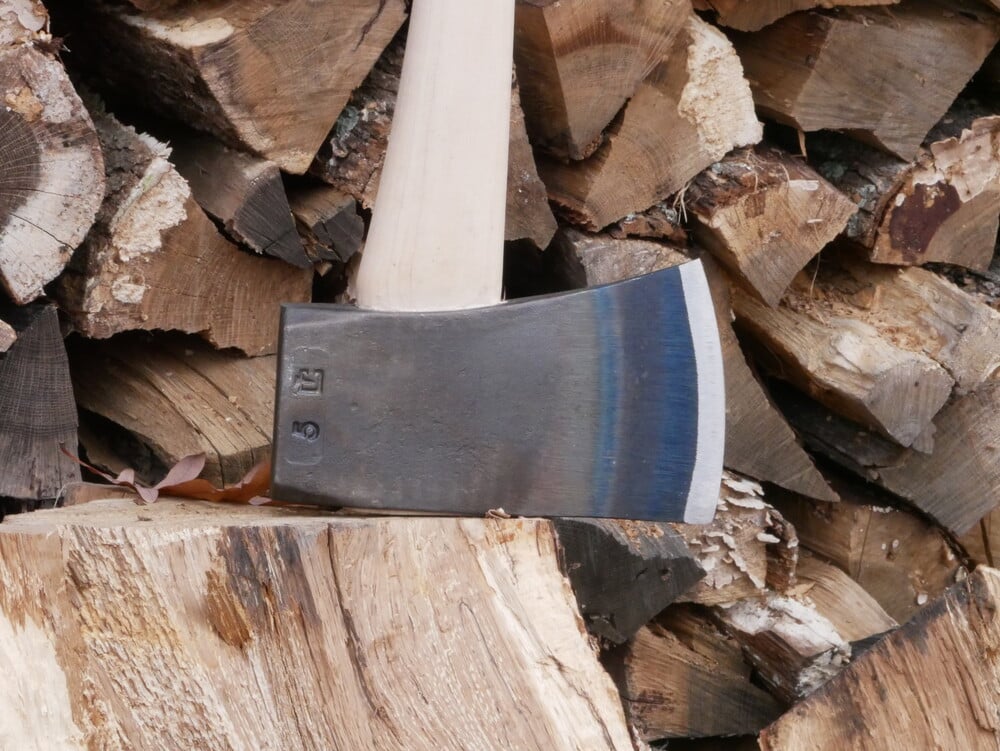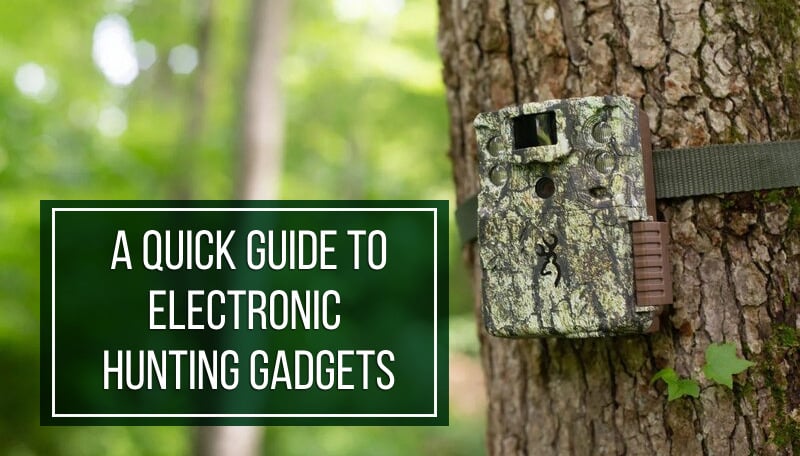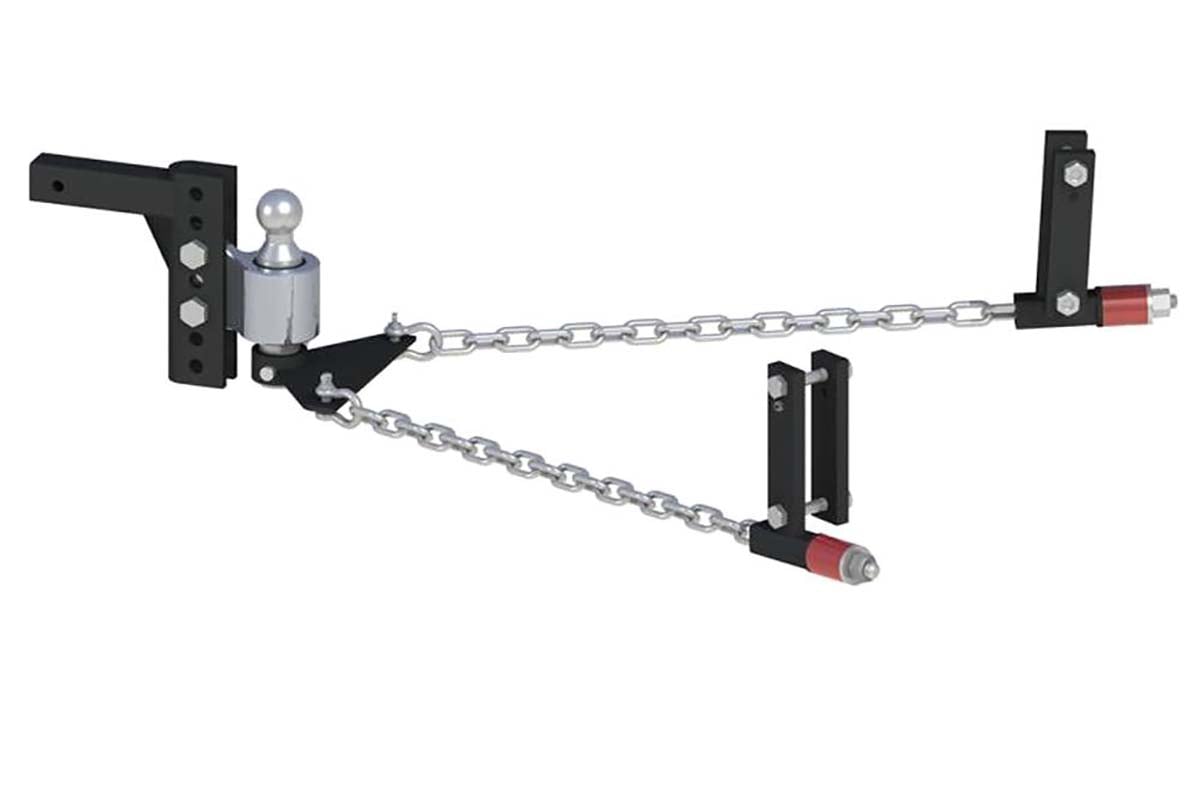Last Updated on
Ever found yourself in the middle of an idyllic camping trip, roasting marshmallows under a starlit sky, when suddenly you realize you’re missing an axe? No? Well, let’s hope it because you always take one for your camping trips. Jokes aside, you might be thinking, “A camping axe? Isn’t that a bit overkill?” Well, not really. It’s not just for chopping down trees or warding off wild animals (though it could come in handy for both). An axe is like the Swiss Army Knife of camping tools, offering a surprising range of uses that can make your outdoor adventure smoother and more enjoyable. In this article, we’ll explore four types and models of axes that will be a great asset for your next camping trip.
Table of Contents
Camping Axe
Fiskars X11
Hatchet
Husqvarna Hatchet
Tomahawk
WOOX AX1
Splitter
Council Tool Dayton Pattern SB
Conclusion
FAQs
The Camping Axe
Calling camping axes a separate category might be a bit of an overstatement. They don’t feature any specific handle lengths or head or blade forms. Nonetheless, such a classification has a right to exist, as these axes are specifically designed for the great outdoors. They’re often lighter and more compact than regular axes, which makes them easy to carry in a backpack without weighing you down. And trust me, every ounce counts when you’re hiking up that mountain trail.
Furthermore, camping axes typically have a multi-purpose design. The blade is used for chopping and splitting wood, while the flat back (or poll) can be used for hammering in things. Some models even come with additional features like a nail puller or a bottle opener.
Styles of Camping Axes
Camping axes come in a variety of styles, each with its own unique set of features.
- Traditional Axes are your straightforward, no-frills option. They’re reliable, durable, and great at chopping and splitting wood.
- Multi-tool Axes take versatility to the next level. Apart from the standard axe blade and hammer poll, they come with extra tools like a saw or a knife. To be more precise, those are multi-tools that just happen to have an axe among other tools.
- Survival Axes are designed for those who like to venture off the beaten path. They’re usually equipped with additional features like a sharp spike on the poll for breaking ice or glass.
Where Does a Camping Axe Excel?
A camping axe is most useful when you need to process wood for a campfire or clear brush from your campsite. It’s also handy for tasks like driving in tent stakes or opening cans. But perhaps where a camping axe truly shines is in its ability to provide a sense of self-sufficiency if you are into this sort of thing. There’s something empowering about being able to rely on your own skills and tools to survive and thrive in the wilderness.
Fiskars X11 17-Inch
The Fiskars X11 17-Inch camping axe is an outstanding tool. With impeccable balance and compact design suitable for one-handed use by most adults, it is ideal for tasks like splitting, kindling or pruning trees. Moreover, it excels at the challenging tasks of bucking up larger logs and splitting firewood, fulfilling the true meaning of its name. The blade’s sharpness widens into a wedge with a noticeable curve on the cheek, allowing it to efficiently split wood by forcing the grain apart instead of merely biting into it. This unique feature sets it apart from other camping axes, making it a worthy choice.
The construction of the X11 appears to be pretty sturdy with its solid molded head being testimony to its durability. However, the spinning lock on the plastic sheath could potentially be a weak point. With its length measuring 17.5″ and weighing 2.4 pounds, the X11 is larger and heavier compared to some other camping axe options. This size and weight provide greater leverage and power, making it ideal for splitting firewood. Despite its dimensions, the axe still feels lightweight due to its well-balanced design. If you are prepared to handle the additional weight, this axe performs flawlessly both at home and during camping trips.
The Hatchet
While a camping axe might be the all-rounder in our outdoor toolkit, let’s not overlook its smaller, equally worthy counterpart – the hatchet. Often underestimated due to its size, a good hatchet can be a game-changer on any camping trip.
What Makes a Hatchet Unique?
Size is the most obvious characteristic that distinguishes hatchets from other types of axes. But don’t let the smaller stature fool you. With a shorter handle and a lighter head, hatchets are designed to be used with one hand, providing more control over the blade. That makes them perfect for precision tasks like carving wood or cutting small branches.
Another handy feature of the hatchet is its multi-functionality. Much like the camping axe, the backside of a hatchet (known as the poll) is flat and can be used as a hammer. That comes in handy for various tasks around the campsite.
Lastly, hatchets are highly portable. Their compact size makes them easy to pack in a backpack and carry long distances. Plus, many hatchets come with a sheath for safe handling and transport.
When Does a Hatchet Shine?
The hatchet truly shines in situations where precision and control are essential. Whether you’re carving a piece of wood to create a cooking utensil, chopping up kindling for the campfire, or simply need to clear some small branches to make way for your tent, a hatchet is your tool of choice.
Hatchets are also ideal for backpacking trips where weight and space are at a premium. Striking a perfect equilibrium between practicality and ease of transport, these tools are an essential part of any backpacker’s kit.
Husqvarna Hatchet
This hatchet is robust and simple, making it an ideal companion for camping trips. Its wide, wedge-shaped bit effectively cleaves small logs without getting lodged in the wood. The head’s weight combined with the pronounced swell of the palm area facilitates effortless chopping of sticks and kindling. The handle, made from natural, uncoated wood, absorbs moisture from the hand, ensuring a firm grip. However, due to its sizable build, it may be more comfortable for those with larger hands.
The hatchet’s design allows for smooth one-handed use and offers a balanced feel. Furthermore, the large cutaway on the head enables detailed carving tasks, making it suitable for bushcraft projects at the campsite. While the steel may be a tad softer compared to other similar products, it is straightforward to sharpen. All things considered, given its cost, this hatchet is a trustworthy tool that, with consistent upkeep, is bound to offer many years of reliable service.
The Tomahawk
When it comes to camping axes, the tomahawk often flies under the radar. But don’t be quick to dismiss it. This versatile tool, with its rich history and unique design, can become a real asset on your camping trips.
So, what sets a camping tomahawk apart from other types of axes? For starters, it’s very light and even lighter than a hatchet. The completely straight handle of a tomahawk is designed to be friction-fit, meaning it can’t slip off during use, much like the handle of a pickaxe. This characteristic gives the user greater control and safety.
But where the tomahawk truly shines is in its multifunctionality. You’ll have a tool perfect for a wide variety of bushcraft activities. On the opposite side, many tomahawks feature a hammer or a spike, adding to their versatility. Need to crack open some nuts? The tomahawk has got you covered.
Moreover, the tomahawk is a great tool for food preparation. Whether you’re dressing game or chopping veggies for your campfire stew, this handy tool is up to the task. And let’s not forget its potential as a self-defense tool.
WOOX AX1 Axe
The WOOX AX1 Axe stands out in the world of outdoor tools with its top-notch craftsmanship and high functionality. Crafted from Tempered Carbon Steel, the tomahawk-style blade is impressively sharp and durable, making wood chopping a breeze. The handle, made from authentic Appalachian Hickory, is both sturdy and comfortable to grip, ensuring reduced hand fatigue during prolonged use. Additionally, the axe’s balance and weight distribution are admirable, providing excellent swing control.
Even though the axe leans on the heavier side (at least for a hatchet) it’s still a decent candidate for your backpack team. If you value performance and durability and don’t mind investing a bit more, the WOOX AX1 Axe is a reliable and high-performing tool that’s worth every penny.
The Splitter
While the log splitter doesn’t rank among the most frequently picked tools for camping, it may still be quite beneficial. What sets the splitter axe apart from other types of axes is its unique design that’s tailored for splitting logs along the grain. Its heavy head and long handle provide the leverage and force necessary to split even the toughest wood. The blade, rather than being sharp, is usually wedge-shaped. This shape helps to drive the wood fibers apart, making the splitting process easier and more efficient.
A splitter axe is particularly useful when you’re camping in colder climates or during the cooler months, where a warm fire is essential. It allows you to process larger pieces of firewood quickly and with less effort compared to a regular axe.
Keep in mind that a splitter axe is heavier and bulkier than other types of axes. So, it might not be the best choice if you’re planning a backpacking trip where weight and space are at a premium. But for car camping or RV trips, it’s an excellent tool to have on hand.
Council Tool 5lbs Dayton Pattern SB Axe
The Council Tool 5lbs Dayton Pattern SB Axe is an impressive tool that packs a punch. With its 5-pound head, this axe is designed for heavy-duty tasks like splitting large logs or felling trees. The Dayton pattern of the axe head, characterized by its slightly curved blade and the flare towards the poll, allows for efficient cutting and chopping.
The handle, made from all-axes-beloved American hickory, is both robust and comfortable to grip, making it easier to wield the heavier head. The axe’s overall build quality is commendable, with a good balance between the head and handle that aids in control during use.
However, the weight of the axe could be a downside for some. It might not be the best choice for those who prefer lighter tools or have to carry their gear over long distances. But for those in need of a sturdy, high-performing axe for demanding tasks, the Council Tool 5lbs Dayton Pattern SB Axe is a solid choice that delivers reliable power and longevity.
Conclusion
As you can see, the market is full of different types of camping axes that are suitable for camping and bushcraft. Which one you choose should depend on what you need it for and how much you are ready to carry. From regular camping axes to tomahawks, from hatchets to splitters, there’s a tool for everyone. Just remember to choose the tool that best fits your needs and you’ll be ready for whatever outdoor challenge comes your way.
FAQs
What should I look for when buying a camping axe?
When buying a camping axe, consider the following factors: the weight and length of the axe, which should be suitable for your strength and the tasks you plan to perform; the material and construction of the handle and head, which affect durability and performance; and the shape and sharpness of the blade, which influence how effectively the axe can cut or split wood.
What is the difference between a camping axe and a hatchet?
The main differences between a camping axe and a hatchet lie in their size and intended use. A camping axe is generally larger, with a longer handle and a heavier head, making it ideal for chopping wood or clearing large obstacles. A hatchet, on the other hand, is smaller and lighter, making it more portable and better suited for precision tasks like carving or splitting small logs.
Why would I need an axe while camping?
An axe can be a versatile and valuable tool during camping trips. You can chop wood for campfires, split logs into smaller, more manageable pieces and clear space for your tent or campfire by cutting away branches or small trees. It also comes in handy in all sorts of emergencies.
